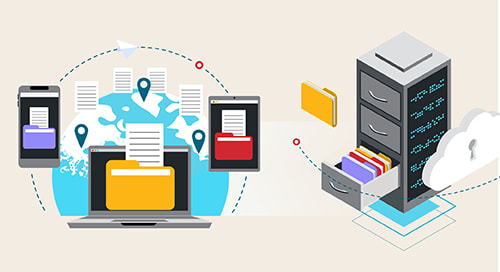There are many managed file transfer solutions out there and many words to describe them. Although one word may not be worth a thousand pictures, these seven words can paint a pretty sharp picture of what to look for if you want the ideal MFT solution for your company.
7 words to describe an ideal MFT solution:
No. 1: Security
Your company's data and brand integrity are on the line--not to mention your customers'. Today's MFT solutions must provide centralized control of the entire MFT ecosystem--easily via a single administration console. Predictive monitoring, alerts, and actions backed by machine learning help you monitor file transfers so you can ensure you meet your SLAs and avoid costly security-related incidents.
No. 2: Speed
To get things done faster, lose the bottlenecks. The right MFT solution will significantly cut the time it takes to create and deploy file transfers. Look for one where business users can easily create file transfers themselves, without having to wait for help from an overworked IT department.
No. 3: Simplicity
Look for an MFT solution that takes the complexity out of controlling file flow across platforms, operating systems, and locations. You should be able to build critical, high-volume, application-to-application data flows with multi-platform, multi-site file transfer controllers. The ability to create and pre-populated templates for various file transfer flows also simplifies processes.
No. 4: Automation
MFT speed, simplicity, and accuracy most often rely on automation. Make sure you MFT solution gives you the advantages of automated workflows to encrypt and transfer files according to your organization's requirements. Headless operations and API-driven commands enable collaborative, game-changing innovation.
No. 5: Compliance
To ensure total compliance globally, your managed file transfer has to safeguard critical data and files, provide granular visibility and control of the entire MFT ecosystem, and give you complete audit trails for data residency and access. Your MFT solution must ensure data and files comply with a growing alphabet soup of privacy regulations including HIPPA, PCI, DSS, GDPR, and others.
No. 6: Integration
MFT capabilities can't exist in a vacuum. They need to connect as seamlessly as possible to other solutions from numerous outside vendors. Find a solution that lets you integrate administrative, flow management, and governance capabilities into third-party custom applications or IT Service Management (ITSM) solutions using a comprehensive set of REST APIs.
No. 7: Scalability
File-flow volumes are not static and are not quite changeable. You need a managed file solution that scales as your business does and can be deployed however you need it--as a subscription service, on-premises, in a private cloud, public cloud, hybrid cloud, or in your provider's managed cloud. Adjusting to changing needs should be easy so you can deploy, configure, and manage MFT using a single point of control. Set up an MFT strategy session to learn more.
*Download this content above as a pdf*







